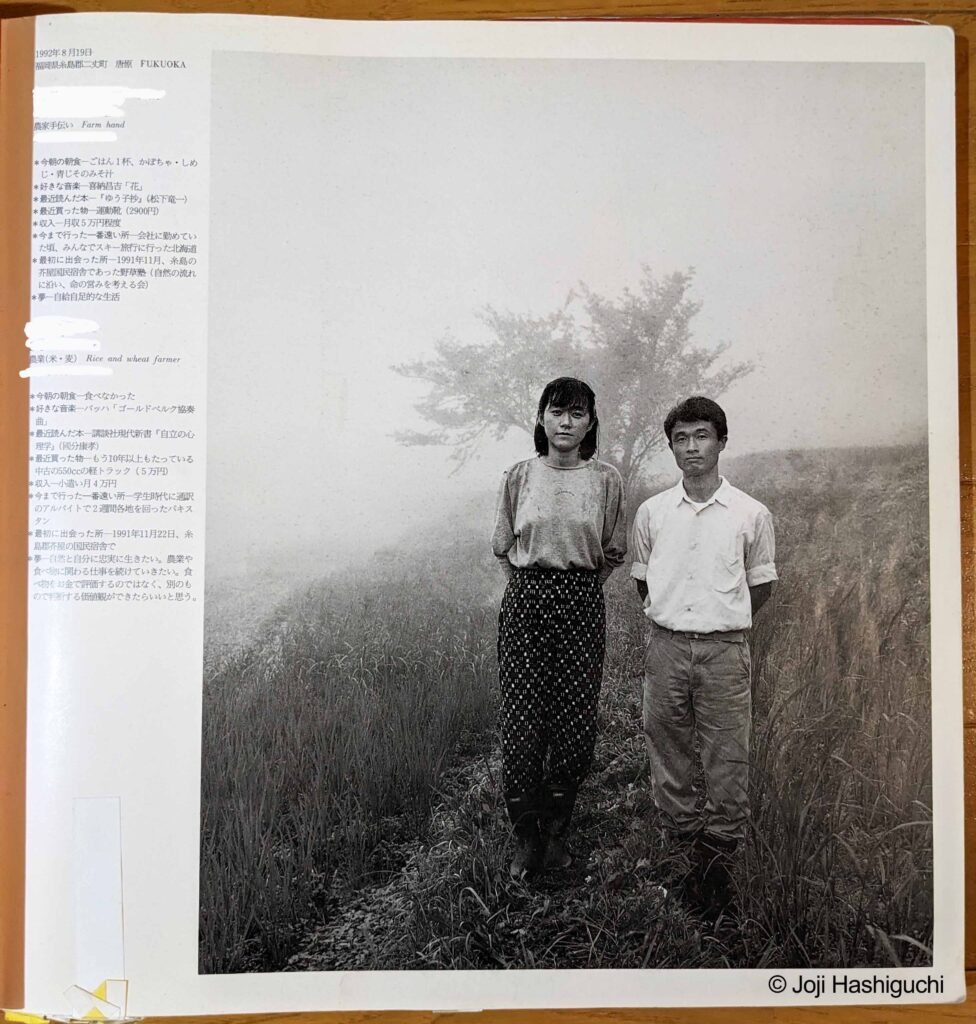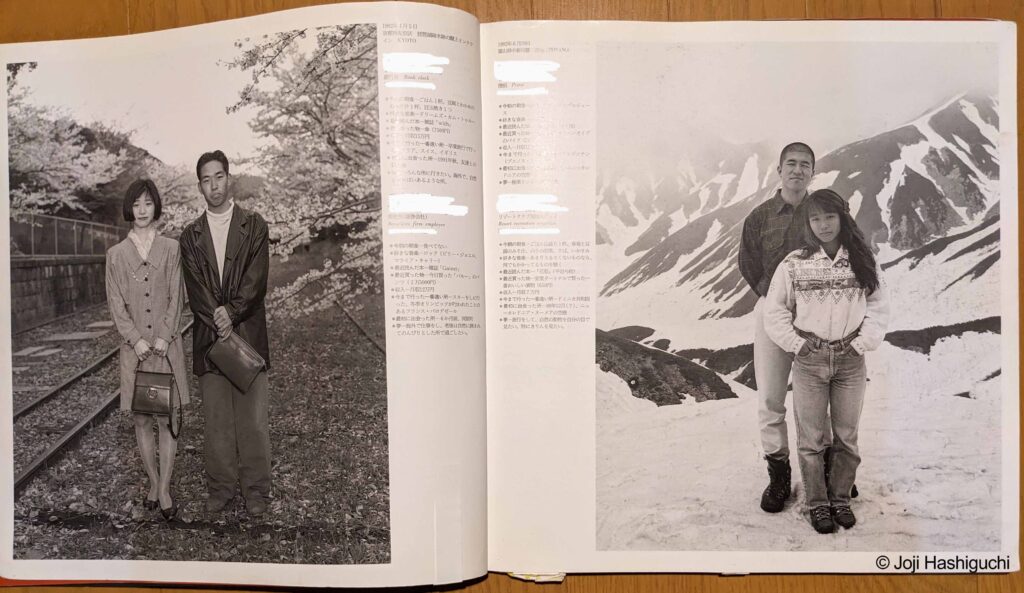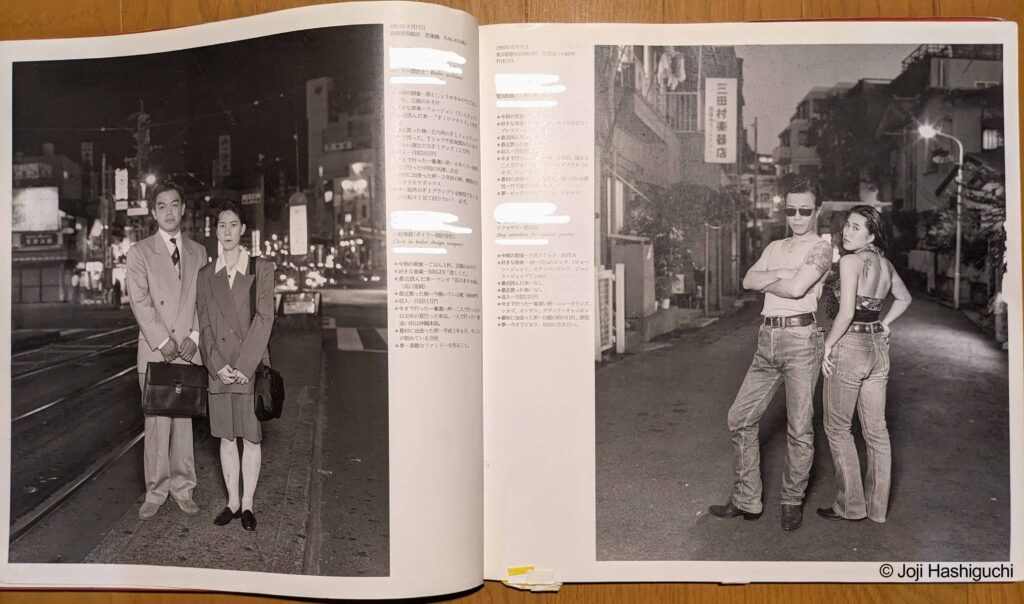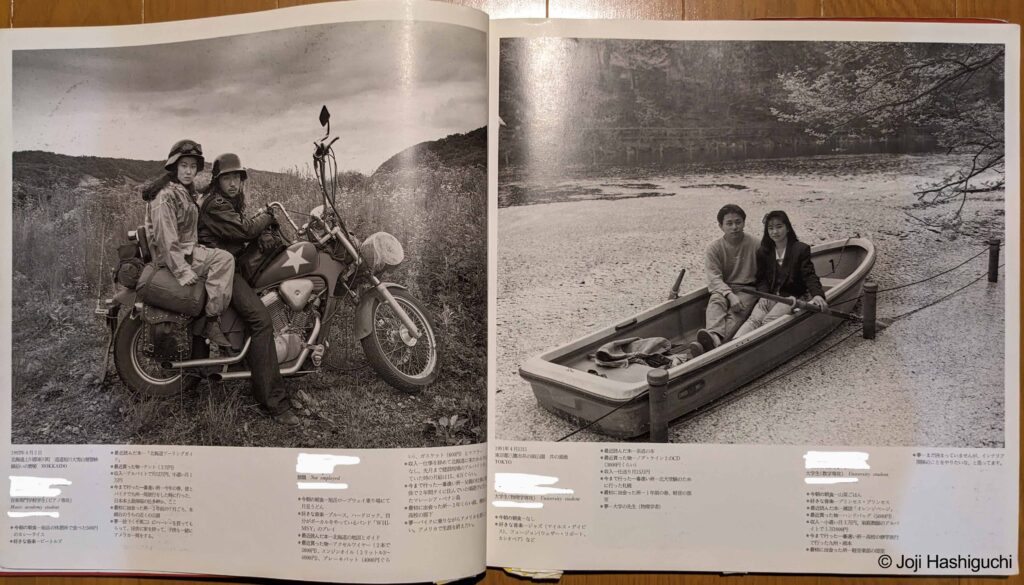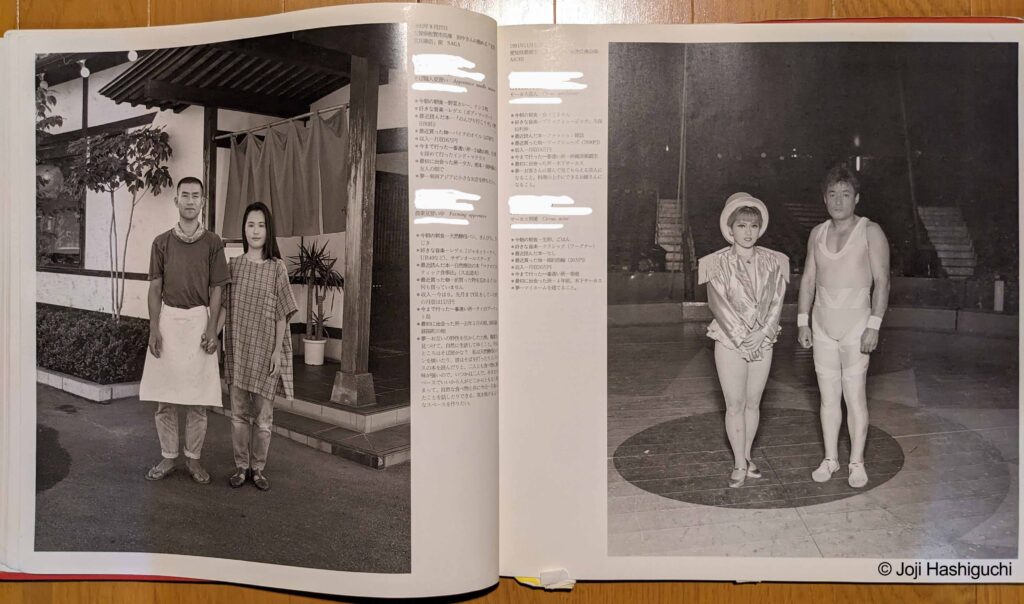As a result, the present work Couple represents the third in this continuing series. Following the example of the first two works, I began taking pictures for Couple in June of 1990 on the Okinawa island of Iri-Omote, and completed my photography in September, 1992 in the Shinjuku district of Tokyo. Over this period of time, I was able to take pictures of 103 couples for inclusion in this volume.
The only condition I made for myself when considering couples to photograph was that they consider each other partners, yet not be married. Many times during my travel I was asked why I didn’t want to photograph married couples. I replied that I felt in the case of marriage, a new factor becomes the stronger part of a couple’s relationship, namely their relationally as members of a “family”. In contrast, the mutual relationship of an unmarried couple presents fewer binding ties than the relationally of “marriage”, and the potential exists for more freedom. And just because that greater freedom is there, a kind of tension comes to exist between the two people, one in which the individual can exist without being dependent on the other.
In addition, I should note that I have included nine gay couples in this volume. While Japanese journalism has not been averse to featuring prominent individuals willing to flaunt their gay orientation, the couples in this volume agreed to appear simply as they do in their everyday lives, but as homosexuals, not as heterosexuals.
And just because I well know the intolerant nature of Japanese society, I felt from these encounters that there will likely be some people who achieve a certain sense of salvation by seeing these everyday couples – even if only nine in number – appear in this volume. And the revolution in the consciousness of gay people is merely one sign that, slowly but surely, the times and society are changing. The practice of “coming out” – identifying oneself openly as homosexual – began in America in the 1970’s, and it has finally begun to appear in Japan as well.
この作品は前2作と同様、90年6月、沖縄・西表島での撮影を皮切りにして、92年9月、東京・新宿での撮影を最後に、計103組のカップルをフィルムに収めることができた。
カップル探しの旅を進めるにあたって用意した条件はただ一つ、互いをパートナーとして認識しあい、なおかつ結婚をしていない、ということである。なぜ結婚していてはいけないのか、という質問を旅の途中で何度も受けたが、結婚という形を取っている場合、「家族」というもう一つの関係性がより強くなることと、カップルの方が互いの関係性において、「結婚」という形ほど縛られるものも少なく、自由な関係が存在しあえること、そして自由なだけに、二人の間にある種の緊張が存在し、互いに依存することのない個が存在しうる、と思ったからである。
またこの写真集の中には、9組のゲイのカップルが登場している。今までもゲイであることを売りにしている人たちがジャーナリズムに登場することはあったが、ここには日常生活の中でたまたまセックスがヘテロ・セクシュアルではなくホモ・セクシュアルである人たちがこのような形で登場してくれた。
日本社会の非寛容さを考えると、わずか9組とはいえゲイの人たちが写真集に登場してくれたことでずいぶん気持ちの上で救われた人たちがいると思う。ゲイ・ピープルの意識の変革もさることながら、少しずつではあるが時代や社会の変化を感じる。70年代にアメリカで始まった「カミング・アウト(自分がゲイであることを社会や家族や知人に対して公表する運動)」の流れがやっと日本にも生まれ始めている。
「知りたい、考えたいことの深さ」 角田 光代 (作家)
1987年から92年にかけて制作・発表された橋口譲二氏の写真集『十七歳』『Father』『Couple』が、このほど新装版として出版された。この写真家も、考えたい、知りたいと思うことに、体の全部でぶつかり続けている人だと思う。これらの写真集は、碇のようなものだ。めまぐるしく変わっていく時代に、写真家はぽとんと碇を落とす。一枚の写真に、私たちは日本という場所の変化と不変を、人々の変化と不変を、感じることができる。今、新たにこれらの写真集を眺めることに、出版当時とはべつの意味が生じている。
『Couple』には物語がある。被写体は結婚していない恋人同士。国籍の違うカップルも、同性のカップルもいる。恋人同士独特の、脆さと緊張感がある。このあと彼らは別れたかもしれず、あるいは家族になったかもしれない。でも、このときはただ、そこに立っている。一個の存在として、自分の暮らす場所を背景にして。存在のゆたかさとともに、画一化されたと思いがちな風景の、その多様さに驚かされる。存在もしくは風景が、通り過ぎた過去ではなくて、私たちの内含する何かであるのだと、思い知らされる。
この写真家が考えたい、知りたいと願うことは、果てがないほど大きいのだと、深く思う。
ー「サンデー毎日」(2007.3.11号) より
